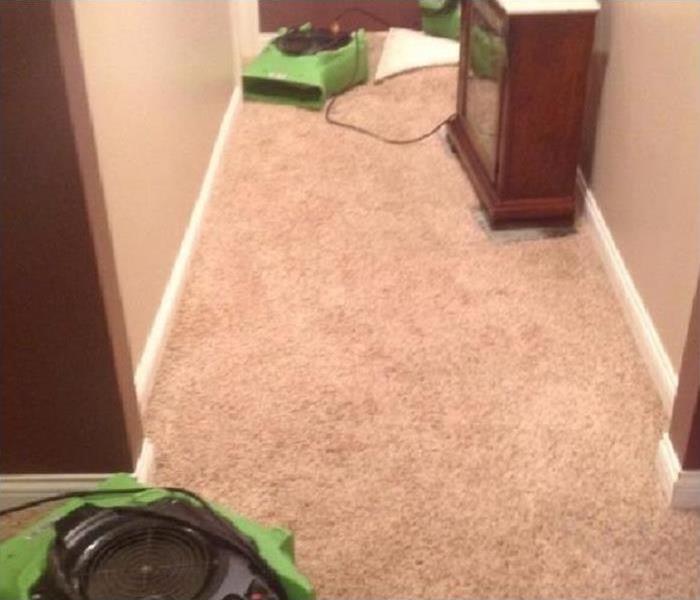How to Limit Mold Growth After a Flood
10/2/2022 (Permalink)
How to Prevent Mold After a Flood
If there is floodwater in your home after a storm in Union, KY, it can contribute to a variety of problems. A common issue for homeowners is mold growth. It only takes a short time for this fungus to grow and spread throughout your home when it has the proper conditions. Taking the right steps can keep this growth at a minimum.
1. Remove Excess Water
Mold requires moisture to grow so water damage from a flood creates a perfect opportunity. To reduce mold growth, it is important to remove as much water from the building as you can. Once this has been done, allow everything to dry completely. Using a dehumidifier to remove moisture from the air can be helpful during this process.
2. Clean or Throw Out Damaged Property
Not only does flooding affect your house but also the items within it. Objects with hard surfaces are relatively easy to clean and can be quickly sanitized. On the other hand, porous and absorbent materials that hold water can contribute to the growth of mold if they are not thoroughly cleaned. Items that cannot be easily cleaned may need to be tossed and replaced instead.
3. Arrange For Professional Mold Removal
Because mold grows so quickly, it can be difficult to prevent it completely after a flood. A professional mold remediation company can find and remove mold that you may have missed. It is best to have this done by a professional as attempting to clean the mold on your own could spread it further throughout the house. These professionals can also treat the area to help prevent the mold from returning.
Mold growth is a common type of damage that occurs after a flood. You can limit the growth by reducing the amount of moisture in your home. If there is a mold infestation, professionals can help you remove the fungus and keep it from returning.

 24/7 Emergency Service
24/7 Emergency Service
